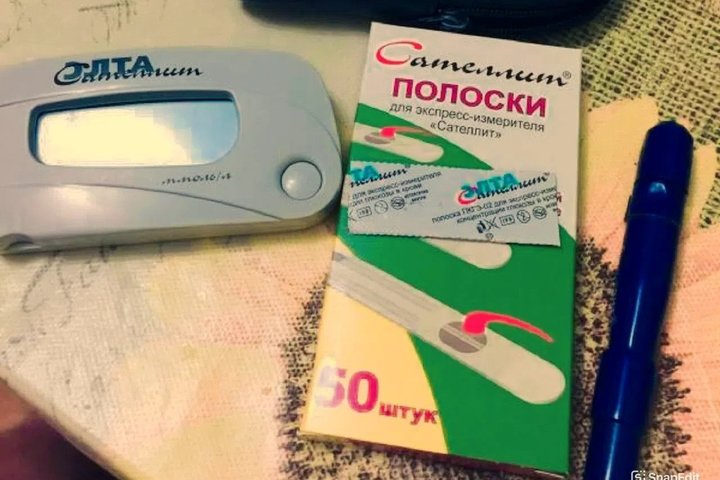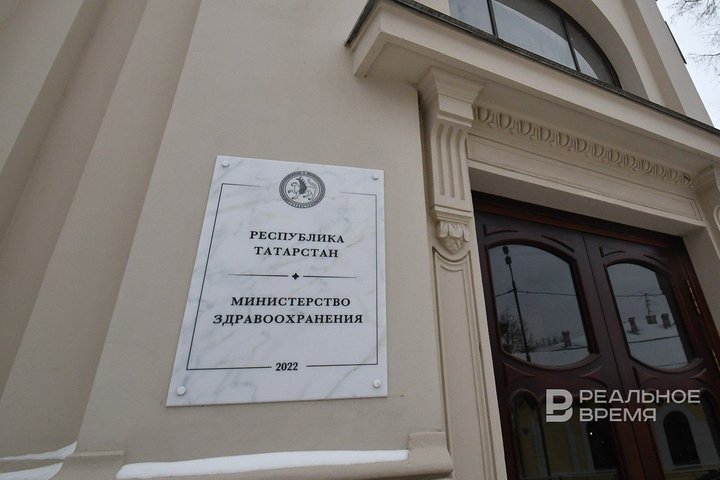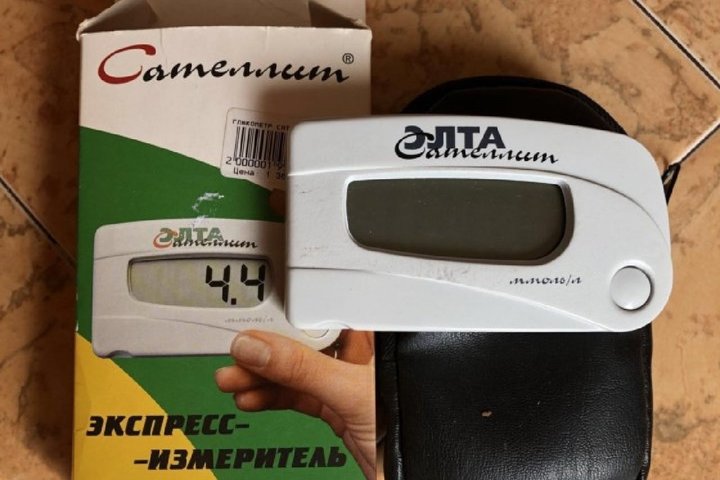Majority of diabetics in Tatarstan deprived of ‘free’ test strips
How diabetics have lost access to doctor-recommended blood sugar monitoring

In Tatarstan, more than 95% of diabetes patients have lost the possibility to receive free access to a crucial tool for monitoring blood sugar levels — glucose meter test strips. The republican Cabinet has limited the number of recipients, leaving this right only to patients with insulin-dependent type 1 diabetes. Realnoe Vremya investigated the reasons why the region has deprived patients of these expensive “consumables” despite having its own diabetes control programme, as well as the situation with the shortage of vital medications for diabetics.
“It’s unrealistic to buy these medications and test strips on a pension”
Kazan resident Tatyana S., diagnosed with type 2 diabetes — a condition that entitles her to subsidised medication — reached out to Realnoe Vremya. However, obtaining the full range of prescribed drugs and tools for monitoring blood sugar levels free of charge has proven to be a challenge:
“I was initially prescribed the drug Forxiga, and two months later — Evodin. Both medications are expensive: prices for the first start at 2,200 rubles in pharmacies, and for the second — from 1,200. But I was only issued the cheaper Metformin for free, which costs 200 rubles — something I can afford myself. And only after I insisted repeatedly, did they finally issue a free prescription for Forxiga — several months later.”
Moreover, the doctor recommended that the woman monitor her blood sugar levels no less than twice a day — before and after meals — in addition to taking measurements in emergency situations, when she feels unwell. “Fifty of the cheapest test strips cost 770 rubles, but I was denied free provision of test strips. They told me that with type 2 diabetes, they are not covered. So what am I supposed to do? It’s unrealistic to buy these medications and test strips on a pension. Besides, there is information online — including on the websites of various regional prosecutor’s offices — stating that by law, diabetics are entitled to be supplied with test strips, and there is no mention whatsoever of patients being divided by diabetes type!” she emphasised.

Complaints from patients about the unavailability of the diabetes medication Forxiga were also submitted to People’s Control on the State Services of the Republic of Tatarstan portal. For example, in December 2024, Igor N. from Almetyevsk received the medication only a week after submitting a request, which had been redirected to the republican Ministry of Healthcare. Then, on 23 March 2025, he filed another complaint: “The drug Forxiga, which is issued by subsidised prescription, is unavailable in Tattekhmedfarm pharmacies.” The Ministry of Healthcare of Tatarstan thanked him for his message and requested “more information about the issue you encountered,” as well as the applicant’s personal details “so that we can help resolve the issue as quickly as possible,” to which the applicant responded:
“The problem isn’t mine — it’s yours. You are the ones who are supposed to supply the medication, but it’s simply not available in the city’s pharmacies. Check the pharmacies in the city for medication availability.
However, judging by the ministry’s subsequent silence, no inspections followed. Oksana M., who filed a complaint at the end of January 2025 about the two-month absence of the subsidised drug Jardiance in a Kazan pharmacy, was advised by the Ministry of Healthcare to visit her doctor in order to “adjust her treatment”.
Strict directive
Patients with type 2 diabetes fall under the category of regional beneficiaries — their medication is funded from the regional budget, and the scope of social assistance they receive is determined by regional regulations.
“The provision of medicinal products, medical devices, and specialised therapeutic nutrition for regional beneficiaries is carried out in accordance with the list approved by the directive of the Cabinet of Ministers of the Republic of Tatarstan dated 13 September 2022, No. 1953-r,” the Ministry of Healthcare of Tatarstan told Realnoe Vremya. “According to the above-mentioned directive, test strips for glucose meters used to measure blood sugar levels are provided to patients with insulin-dependent type 1 diabetes, children, adolescents, and pregnant women.”

“Test strips must be free”
There are clinical guidelines from the Russian Ministry of Healthcare stating that patients with type 1 diabetes must measure their blood sugar levels four times a day, and those with type 2 diabetes — three times a day. Without proper monitoring, blood sugar levels may not only rise despite medication but also drop — to the point where a patient, regardless of diabetes type, could fall into a hypoglycaemic coma. Thus, the availability of a glucose meter and test strips for diabetics is truly a vital component of medical care.

In addition, the Government Decree of the Russian Federation dated 30 July 1994, No. 890, “On State Support for the Development of the Medical Industry and Improvement of the Provision of Medicines and Medical Devices to the Population and Healthcare Institutions”, remains in force. This decree establishes a list of population groups and categories of diseases for which, during outpatient treatment, medications and medical devices must be dispensed free of charge with a doctor’s prescription. According to the list, individuals suffering from diabetes (regardless of type) are entitled to receive “all medicinal products, ethyl alcohol (100g per month), insulin syringes, Novopen and Plivapen types 1 and 2, needles for them, and diagnostic tools” free of charge. Diagnostic tools — this includes test strips.
“Test strips for patients with type 2 diabetes must be provided free of charge,” confirmed the All-Russian Union of Patients. “However, in many regions of Russia, diabetics are only supplied with test strips compatible with specific glucose meters. This is permitted and is explained by the specifics of government procurement procedures. Glucose meters vary, test strips vary as well, and so do their prices. The cheapest options are usually purchased during tenders. Previously, this led to certain issues, and to avoid them, some regions have adopted a policy of centrally purchasing test strips for glucose meters of a specific type. And if a patient buys such a device on a doctor’s recommendation, they are issued test strips for it free of charge.”
Benefit only for 4.6% of patients
The republican Ministry of Healthcare informed Realnoe Vremyathat as of 15 July 2025, in Tatarstan there were:
- 5,219 patients with type 1 diabetes (4.6% of the total number of patients);
- 107,810 patients with type 2 diabetes (95.4% of the total number of patients).
Insulin medications are received by:
- 5,219 patients with type 1 diabetes;
- 13,681 patients with type 2 diabetes.
Test strips for glucose meters in Tatarstan are provided to 5,219 people — only patients with type 1 diabetes.
Schools exist — but no support
Since 2024, the republic has operated a regional programme titled Fight Against Diabetes, with 148.5 million rubles spent on its implementation in 2024. The programme includes statistical data from the time of its development. In particular, from 2018 to 2022, mortality from endocrine system diseases, nutritional disorders, and metabolic disturbances increased by 29% — from 43.5 cases per 100,000 population to 56.2 cases.
Of the 2,182 people who died in 2022 due to diseases of the endocrine system, nutritional disorders, and metabolic disturbances, more than 95% (2,079) were diabetes patients. In 2023, atherosclerotic cardiovascular diseases cumulatively became the cause of death for 32.4% of patients with type 1 diabetes and nearly 35.7% of patients with type 2 diabetes.
The mortality rate directly caused by type 2 diabetes increased by 63.5% over five years (2018–2022), while the mortality rate from type 1 diabetes fell by more than 38%.
“The leading causes of death among diabetes patients remain cardiovascular diseases,” the programme states. Their share among causes of death in 2022 exceeded 21%. The programme identifies the introduction of sodium-glucose co-transporter 2 (SGLT2) inhibitors (empagliflozin, dapagliflozin) into the list of subsidised medications from 2020 as arguably the main factor behind the reduction in mortality from these causes compared to 2018. Empagliflozin and dapagliflozin are the very drugs — Jardiance and Forxiga — that diabetics in Tatarstan complain are missing from pharmacies.
According to the regional programme Fight Against Diabetes in the Republic of Tatarstan, the republic was supposed to finance the opening and upgrading of 56 Schools for Diabetes Patients. In these schools, patients are primarily taught to monitor their blood sugar levels. However, Tatarstan has deprived the vast majority of such patients of this ability by effectively “cancelling” subsidised provision of test strips for patients with type 2 diabetes.